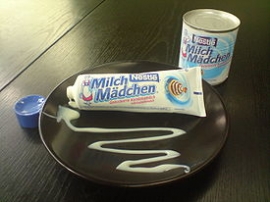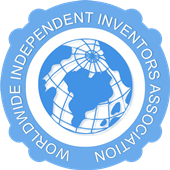- BY Admin
- POSTED IN Articles
- WITH 0 COMMENTS
- PERMALINK
- STANDARD POST TYPE

Condensed milk, also known as sweetened condensed milk, is cow’s milk from which water has been removed and to which sugar has been added, yielding a very thick, sweet product that can last for years without refrigeration if unopened.
STORE OF INVENTIONS & TECHNOLOGIES FOR SALE : https://worldwideinvention.com/store/
Condensed milk has a thick consistency and is commonly packaged in tubes or tins.
Can of Black & White condensed milk for international trade
Can of condensed milk sold in Russia, Ukraine and other countries of the former USSR
The two terms, condensed milk and sweetened condensed milk, have become synonymous; though there have been unsweetened condensed milk products, today these are uncommon. Condensed milk is used in numerous dessert dishes in many countries, especially in Russia and the former Soviet Union where it is known as “сгущёнка” (sguschyonka, literally “[that which is] condensed”).
A related product is evaporated milk, which has undergone a more complex process and which is not sweetened.
According to the writings of Marco Polo, the Tartars were able to condense milk. Ten pounds (4.54 kg) of milk paste was carried by each man who would mix the product with water. However, this probably refers to the soft Tartar curd which can be made into a drink (“airan”) by diluting it and therefore to fermented, not fresh, milk concentrate.
Nicolas Appert condensed milk in France in 1820, and Gail Borden, Jr. in the United States in 1856 in reaction to difficulties in storing milk for more than a few hours. Before this development milk could only be kept fresh for a short while and was only available in the immediate vicinity of a cow. While returning from a trip to England in 1851, Borden was devastated by the death of several children, apparently due to poor milk from shipboard cows. With less than a year of schooling and following in a wake of failures, both of his own and of others, Borden was inspired by the vacuum pan he had seen being used by Shakers to condense fruit juice and was at last able to reduce milk without scorching or curdling it. Even then his first two factories failed and only the third, built with his new partner, Jeremiah Milbank in Wassaic, New York, produced a usable milk derivative that was long-lasting and needed no refrigeration.
Probably of equal importance for the future of milk were Borden’s requirements (the “Dairyman’s Ten Commandments”) for farmers who wanted to sell him raw milk: they were required to wash udders before milking, keep barns swept clean, and scald and dry their strainers morning and night. By 1858 Borden’s milk, sold as Eagle Brand, had gained a reputation for purity, durability and economy.
In 1864, Gail Borden’s New York Condensed Milk Company constructed the New York Milk Condensery in Brewster, New York. This condensery was the largest and most advanced milk factory and was Borden’s first commercially successful plant. Over 200 dairy farmers supplied 20,000 gallons (76,000 litres) of milk daily to the Brewster plant as demand was driven by the Civil War.
The U.S. government ordered huge amounts of it as a field ration for Union soldiers during the American Civil War. This was an extraordinary field ration for the nineteenth century: a typical 14 oz (400 g) can contains 1,300 calories (5440 kj), 1 oz (30 g) each of protein and fat, and more than 7 oz (200 g) of carbohydrate.
Soldiers returning home from the Civil War soon spread the word. By the late 1860s, condensed milk was a major product. The first Canadian condensery was built at Truro, Nova Scotia, in 1871. In 1899, E. B. Stuart opened the first Pacific Coast Condensed Milk Company (later known as the Carnation Milk Products Company) plant in Kent, Washington. Unfortunately, the condensed milk market developed a bubble. Too many manufacturers chased too little demand. By 1912, stocks of condensed milk were large and the price dropped. Many condenseries went out of business. In 1911, Nestlé constructed the world’s largest condensed milk plant in Dennington, Victoria, Australia.
In 1914, Professor Otto F Hunziker, head of Purdue University’s dairy department, self-published Condensed milk and milk powder: prepared for the use of milk condenseries, dairy students and pure food departments. This text, along with additional work of Professor Hunziker and others involved with the American Dairy Science Association, standardized and improved condensery operations in the U.S. and internationally. Hunziker’s book was republished in a seventh edition in October 2007 by Cartwright Press.
The first World War regenerated interest in, and a market for, condensed milk, primarily due to its storage and transportation benefits. In the U.S., the higher price for raw milk paid by condenseries created significant problems for the cheese industry.




